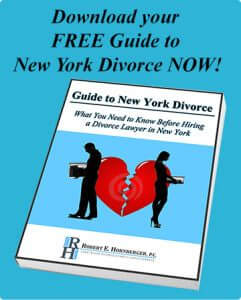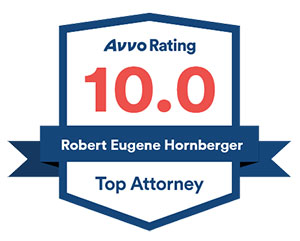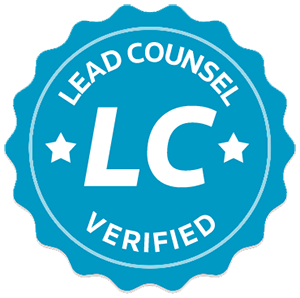 As a Long Island Divorce Lawyer, I have been captivated by the sweeping headlines of the past five years, and especially throughout the last couple weeks, regarding the heart-wrenching story of a Colorado man who never gave up hope of seeing his two daughters again. The story begins around 2010, when the man, Dennis Burns, was granted residential custody of his two children after a heated legal battle with his soon to be ex-wife, Ana Alianelli. Shortly thereafter, Ms. Alianelli took the parties’ two children to her native Argentina against both Burn’s wishes and the Court Order which stated the children were to reside with their father. After approximately five long years, numerous trips to Argentina, multiple court appearances and appeals and countless sleepless nights, Mr. Burns was finally reunited with his children in April 2015.
As a Long Island Divorce Lawyer, I have been captivated by the sweeping headlines of the past five years, and especially throughout the last couple weeks, regarding the heart-wrenching story of a Colorado man who never gave up hope of seeing his two daughters again. The story begins around 2010, when the man, Dennis Burns, was granted residential custody of his two children after a heated legal battle with his soon to be ex-wife, Ana Alianelli. Shortly thereafter, Ms. Alianelli took the parties’ two children to her native Argentina against both Burn’s wishes and the Court Order which stated the children were to reside with their father. After approximately five long years, numerous trips to Argentina, multiple court appearances and appeals and countless sleepless nights, Mr. Burns was finally reunited with his children in April 2015.
Please keep in mind there are underlying international abduction and kidnapping issues at play in the Burns’ matter; however, putting those aside for a moment, I believe the case highlighted certain aspects of custody battles which are important to couples experiencing similar circumstances in Nassau County and Suffolk County during their Long Island Divorce. In reading articles and watching news programs about the Burns family, the phrase “best interests of the child” was continuously mentioned.
If you’ve read in prior posts on the subject of Child Custody on this Long Island Divorce Law website, you will know that the best interests of the child is the standard used by the Courts in Nassau and Suffolk counties, and all divorce courts in New York state, when making a child custody determination.
Pretend for a moment there are no international issues involved, the parties in this case both reside within the State of New York and Ms. Alianelli legally relocated with the children from Long Island to Buffalo. Five years later, Mr. Burns files with the Family Court seeking a modification of the current child custody order to declare him the residential parent and order Ms. Alianelli to return the children to Long Island. Not only would the court consider whether the potential relocation was in the best interests of the children, but it would also consider whether the potential change in custody was in the child’s best interests.
Taking facts from the Burns’ matter and simply replacing Argentina with Buffalo, the court would certainly consider the fact that while in Buffalo with the children Ms. Alianelli refused to allow Mr. Burns reasonable access to them. Although there was an existing Court Order which directed Ms. Alianelli to allow Mr. Burns to communicate with the children via Skype three times a week, Ms. Alianelli continuously and willfully violated this Order. It is the court’s strong opinion that it is in the best interests of the children to have two loving and caring parents. Naturally, the court looks unfavorably upon one parent if he or she alienates the children from the other parent.
Furthermore, Ms. Alianelli refused to allow the children to speak to their paternal grandparents while in Buffalo. However, upon the children’s return to Long Island, Mr. Burns seems more than willing to facilitate their relationship with their mother, even permitting their mother to travel from Buffalo to Long Island with them and agreeing to allow their mother to enjoy supervised visitation with the children.
If you are seeking custody or a modification of custody you must demonstrate that you foster a relationship between not only the children and their other parent, but also between your children and the other parent’s family.
As stated, it is important to keep in mind there were underlying international issues at play in the Burns matter, however, the three factors previously mentioned play an extremely important role in your Long Island Divorce if there is a custody battle, or if you believe there is the potential for a custody battle. As much as you and your soon to be ex-spouse may not get along or cannot stand to be in the same room together, you cannot let that get in the way of the child or children’s relationship with their parents. If you truly seek to be the residential parent, you must facilitate and foster the relationship between your children and their other parent, as well as their relationship with the children and their extended family.
Questions About Child Custody and Visitation on Long Island?
To learn more about what you need to know about Child Custody on Long Island, visit this page on Child Custody or contact us at 631-923-1910 for a complimentary consultation.
Have Questions About Your Child Custody Case? Receive a Free Consultation from a Divorce Lawyer, Long Island’s Robert E. Hornberger, Esq.
If you have questions about your children’s custody or need more information about issues of Child Custody in Nassau County or Suffolk County on Long Island, you should immediately consult a local divorce lawyer. Long Island’s Robert E. Hornberger, Esq., PC’s compassionate and experienced divorce attorneys can help. Call us at 631-923-1910 for a complimentary, confidential consultation or fill out the short form on this page and we’ll get right back to you.
Download our Free New York Divorce Guide
 Our 41-page “Guide to New York Divorce: What You Need to Know Before Hiring a Divorce Lawyer in New York” written by an experienced Divorce Attorney Long Island’s Robert E. Hornberger, Esq., provides you with real information on the divorce process and the laws it rests upon in the state of New York. This book will help give you a solid foundation upon which you can begin the process of making your family’s, life better. Download your Free Guide to New York Divorce here.
Our 41-page “Guide to New York Divorce: What You Need to Know Before Hiring a Divorce Lawyer in New York” written by an experienced Divorce Attorney Long Island’s Robert E. Hornberger, Esq., provides you with real information on the divorce process and the laws it rests upon in the state of New York. This book will help give you a solid foundation upon which you can begin the process of making your family’s, life better. Download your Free Guide to New York Divorce here.












